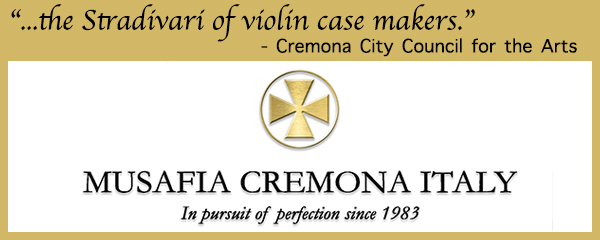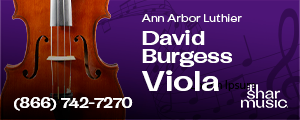abbreviations and shortcuts for learning music faster
I am trying to become more efficient in the way I learn music so that I can do so more quickly.I am interested in hearing any abbreviations or signifiers that people use in their music (whether orchestral or solo) that helps to serve as a brain shortcut to remembering something important.
(e.g., arrows up or down for a note that is customarily played either too low or too high, respectively, squiggle for places that slow down or stretch out, glasses when one really, really needs to look at the conductor, breath marks, etc.)
I realized I don't have a good symbol to indicate when I need to place fingers in a fifth across strings, such that I do so on the first note of the fifth rather than remembering after it's already placed on the single note)...and I'm sure there are many other helpful shortcuts that others might have found and use.
I appreciate any suggestions.
Tweet
Replies (32)
I use short diagonal lines between numbers to represent shifts, and occasionally separating notes to represent string crossings:\ to a higher string, / to a lower one.
To the wavy line for slowing down I add a forward-looking arrow for speeding up.
In general I keep my extra penciled notations to a minimum, especially for orchestra music. Your stand partner would not appreciate it. Especially annoying for me is penciling circles around things that you miss in rehearsal. If don't play pp when you see pp, adding a circle only increases the visual clutter.
Only use finger numbers when there is a real choice, or a shift. If the direction of a shift is not obvious write / for a shift up, for a down shift write [ ] oops my keyboard does have that reverse slant.
There are no shortcuts or magic secrets. But,- memorizing the fast or really difficult spots helps.
Cheers,
Buri
I am colour-blind!
Color, labor, honor, valor, judgment, aluminum.
I feel better now.
(Actually I can’t contribute anything to the finger pattern debate.)
I use the staple-like character to indicate half and whole steps; plus, it is so similar to the down bow symbol (which in some European-printed music is indicated the other way around from American-printed music, so both iterations can become confusing!) However, I like the idea of writing the finger number with lines to indicate how long they must stay down.
@Joel Quivey, could you explain in more detail what you mean by using <> to indicate perfect fifths? Is this just in double stops, or also when a finger should ideally be placed at the same time? Also, to be clear, I am not looking for "magic", but I DO believe that "shortcutz" can help us go through the process of learning and internalizing more quickly!
@Buri, I actually really like the idea of colo(u)r-coding finger patterns! I think a lot in colo(u)rs, and it's easy for me to develop those sorts of associations (being synesthetic, my brain already does that for letters and numbers!) In fact, when the score indicates that a line should be played on a particular string, I highlight that indication with the "colo(u)r" that the string is in my mind, and that gives me the subconscious clue that I should be on that particular string.
@Adrian Heath - I've never thought of indicating string crossings, but that would help so much! I have to think SO HARD when I'm trying to practice the strings crossings on open strings...sometimes I write the letters above each note, but that's very awkward lol. I also like your idea of indicating shifts with a line...I like to think in intervals, so I usually write something like m3 or M3 above the note I'm shifting from, but a line would help things be clearer...
Thank you all! If there are any more ideas, I'm open to hearing them! I appreciate it so much!
If I need to emphasize that two successive notes are a half step apart, I'll sometimes place a caret character (^) between them. It's sort of like an upbow sign but upside-down, and between notes rather than over one.
If I need a low finger (e.g. D# on the D string using the first finger), I'll put a little down arrow following the finger number (1 in this case). If the next note is the adjacent E I can mark it with a 2, but for longer runs I'll just write "1/2 pos." over the passage since I'll be playing it in half-position. Similarly, I'll indicate a "high 2" by a 2 with an up arrow after it.
In passages where the counting gets tricky, I'll extend the bar lines above and below the staff at the beginning of each phrase. That way, even if I get lost, I can listen for the start of the next phrase and go to my next phrasing mark.
If the oboe comes in 24 bars into a 32-bar rest, I'll write "|<--24-->|Oboe" over the staff. That way, whatever happens, I can wait for the oboe to come in, then just count off the remaining 8 bars.
Our orchestra is currently working on Dvorák's New World symphony. At the end of the third movement, as the tempo slows down, the counting gets tricky: 6 notes in a bar, 5 notes in a bar, 4 notes in a bar. One of our cellists suggested writing "hip-po-pot-a-mus" over the 5-note measure. It works!
The colors really can be a useful short hand for finger patterns.
For needing to lift a finger I just write pop 2 or whatever finger. Some of the schools near me use a dash and then a finger number such as -3 to indicate a shift.
Some of the blues and fiddle music I use have the / and \ to indicate slides into or out of the notes.
Charlie - I had a teacher who liked a-phro-di-si-ac for 5 syllables. Encyclopedia can work for 6 syllables.
I can recognise about three; blue(can be mauve), yellow(can be green) and mud(can be anything).
But I have never crossed a "red" light (or so my wife tells me).
Common amongst boys.
Just out of interest, what coloUr is coral?
Especially my own.
I’d like to add that I try to identify the tricky parts in contrast to the ones that I can sight read.
This, I do with orchestra repertoire: I play new music in the original tempo and see where I make mistakes. I mark
those places so I can’t accidentally practice those, again. ;-)
It may be that I have to play according to a certain pattern, so that once I got it, the whole section is done. And there might be the one little place where the pattern doesn’t work, as an exception. This is the place to keep in mind.
Then, I try to find out which fingers want to play, automatically, or which bowings. For the orchestra, I set up my personal fingerings in a way that mostly follows what my fingers tend to choose, anyway, even if that might not be the musically nicest fingering. Works for tutti playing.
In the end, there are only few spots left, normally, where I know that I will always make a mistake. And these are the ones where I write in a fingering, even in the orchestra (after asking my partner if she doesn’t get irritated by that).
As a result, whatever the marking might be, a number or any other graphic element- IF there is one, I know it is important.
Isn’t seeking out changes in how to practice more effectively what matters more?
Like efficient practice methods, practicing out weak spots beyond marking them, chunking, avoid playing-in mistakes (already mentioned, but a big one) developing aural memory, etc. (scratching the surface of a mountain.)
For example, with chunking up to a few bars at a time, not more than your memory can hold, a person can familiarize themselves with a lot of repertoire rapidly. Good interval training and aural memory development supports that. Then music becomes a reference, where to track your place in rehearsals, so you can focus on playing over reading music. Food for thought?
I like to say that two thirds of our technique lies before and between the notes...
For me, looking at notated music is visually difficult - it doesn't translate into notes on the instrument very easily. (I have even considered that I might have a visual processing disorder!) So, I am specifically trying to shorten the time between first reading through the music and having it memorized. Since I memorize incredibly easily (perhaps developed because of my difficulties in parsing out what is happening on the page), it is easy to become divorced from the notation BEFORE I have done all the chunking and intonation practice and internalized the rhythm without fudges or noticed which notes have accents vs which don't, etc. I want to be able to continue to look at the page while I practice, precisely for more effective practice. As a kid, I used to just play it through painstakingly once or twice, and then play from memory...but I lacked the practice of...well, practicing! This meant I was mostly just "playing through" a piece, working from working memory. Oof.
I know this might all sound strange, but little efficiencies in abbreviations or signifiers that can move me from "that looks like a mess of notes" to "ah, a M3, and there's a whole step there, and this is a diminished chord," notated in a way that I pick up faster than just looking at the black and white notes...would, I am theorizing, (and has begun to) help me considerably.
If anyone else can relate to this "problem" of mine, I would be open to solutions you might have found!
https://www.youtube.com/shorts/9rJz7NdPb9s
Thank you, algorithms! :)
This discussion has been archived and is no longer accepting responses.
Violinist.com is made possible by...
Violinist.com Holiday Gift Guide
Dimitri Musafia, Master Maker of Violin and Viola Cases
International Violin Competition of Indianapolis
Johnson String Instrument/Carriage House Violins
Subscribe
Laurie's Books
Discover the best of Violinist.com in these collections of editor Laurie Niles' exclusive interviews.

Violinist.com Interviews Volume 1, with introduction by Hilary Hahn

Violinist.com Interviews Volume 2, with introduction by Rachel Barton Pine













